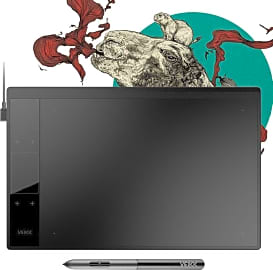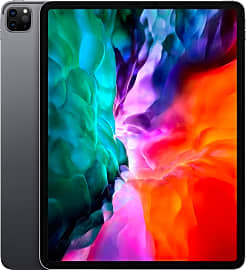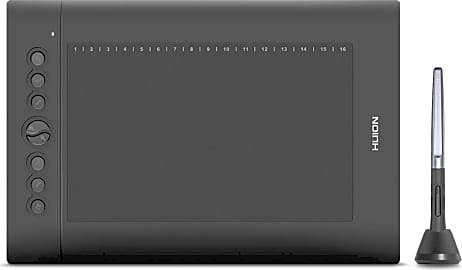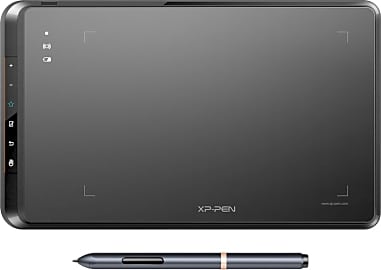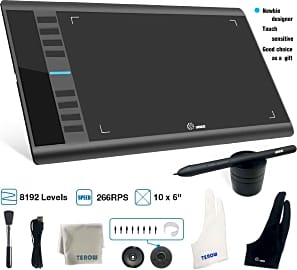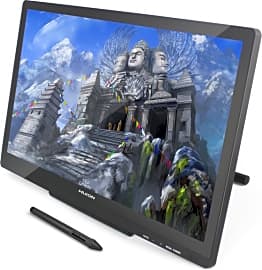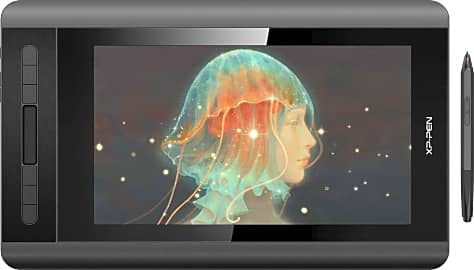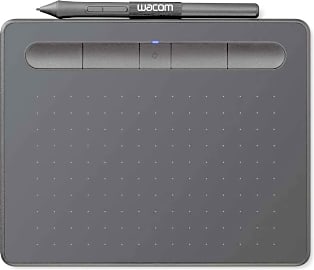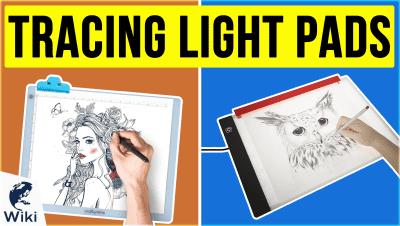The 10 Best Drawing Tablets

This wiki has been updated 41 times since it was first published in February of 2015. Are you looking to go beyond the world of Copic markers and sketch notebooks? Edit, share, and create pieces of digital art with one of these innovative drawing tablets. We've included high-quality models that are suitable for architects, graphic designers, and artists, as well as budget-friendly options that beginners can use to hone their artistic skills and gain creative experience. When users buy our independently chosen editorial selections, we may earn commissions to help fund the Wiki.
Editor's Notes
October 26, 2020:
We've removed older models of the Huion tablets due to the availability of newer models. We've included the Huion Kamvas 22 Plus due to its large surface area and high-quality resolution that is worth the price. The Huion Kamvas Pro 24 was also worth including due to its 20 hotkeys that can be programmable to your preferences. This model works great for left or right-handed users. Those who don't mind breaking the bank should appreciate the iPad Pro. Besides access to apps, browsers, and 4K video recording, its high-end touch screen makes it ideal for artists. It's a great option for those looking for a compact option that's easy to take on the go. Get a case for your iPad to best protect your precious tablet to help prevent scratching and screen cracking.
November 12, 2019:
Availability issues led us to remove the Huaker LCD and Ugee M1000L from the rankings. We also dropped a couple items with quality concerns. We found that a newer version of the Wacom Intuos is now being offered, so we updated the listing to reflect this. It’s still a serviceable all-purpose option, though we did note several reports that the pen nibs tend to wear down with extended use.
Since we were forced to eliminate an introductory model for children from the list, we made sure to include a replacement that mirrors this style. The ZBHT Board isn’t particularly powerful or sensitive, but it’s easy for kids to use and its colors are vivid and engaging. Parents appreciate that the youngsters can doodle away without wasting any paper.
The Huion Kamvas is the most impressive of the new additions — its advanced pen offers impressive tilt recognition, and the anti-glare screen allows for smooth pen strokes and dependable responsiveness. It should perform well for both beginners and veteran users.
Special Honors
Clip Studio Paint Looking for software that's ideal for creating mangas or comics? This program may be the option for you. It features specific tools to help you sketch, ink, and color your digital pages. It offers a free trial, a one-time purchase, or monthly usage plans. clipstudio.net
Adobe Photoshop What most would call an industry-standard program, Photoshop offers a wide variety of tools for artists looking to create high-end works of art. Though it has a steep learning curve, it comes with a lot of tutorials. Also, never shy away from searching for in-depth explanations on YouTube and online forums. You can also get access to all Adobe apps such as Illustrator, Premiere Pro, and Acrobat if you want to expand your digital horizon. adobe.com
Who Drawing Tablets Are Great For
A student can utilize a drawing tablet to leave digital notes in their e-book, and propel their learning forward.
If you've ever tried to draw on a computer using a mouse, you know how difficult it is to draw a straight line, let alone a recognizable picture. The necessity of a drawing tablet is obvious if your job or habits require even the slightest bit of digitization. Graphic designers, engineers, architects, and digital artists all find great use for drawing tablets.
Drawing tablets can also make editing photos extremely simple. Some models even offer buttons on the tablet itself, which you can assign to functions you use often - like the zoom and brush tools. Plus, the low lag time and smooth feel of a stylus makes for quicker, smoother edits, with less need to spam those hotkeys. Hobby artists and animators are also turning to drawing tablets as simple ways to create and save their work before making questionable edits. You can draw 5 different scenes on the same saved background, rather than having to hand draw or photocopy the same image over again.
A teacher utilizing a drawing tablet can make edits to presentations in real time, enhancing the retention rate of the information being taught. A student can utilize a drawing tablet to leave digital notes in their e-book, and propel their learning forward. Drawing tablets are even well suited to filling out digital forms. Instead of having to print out the documents, fill them in by hand, and scan them into a computer before sending them; you can simply input data into the form using your drawing tablet.
Things To Consider Before Choosing A Drawing Tablet
When choosing your drawing tablet, there are many factors to consider. One of the most important deciding factors is the sensitivity of the tablet. In early models, this was the factor that was lacking most. Presently, some models have thousands of levels of sensitivity. Whether you want to barely glance the page or make deep, gouging marks in it; if you are doing sensitive work, you need to make sure your drawing tablet can keep up.
In most tablets, this has to do with the relationship between the drawing tablet and its input device – the digital pen.
The latency and response time of your drawing tablet are also important factors to consider before making a purchase. In most tablets, this has to do with the relationship between the drawing tablet and its input device – the digital pen. Advanced digital pens contain accelerometers to gauge the movement, angle, pressure, and contact with the tablet surface. The pen creates a different type of mark depending on these measurements. If there is any noticeable lag time between your drawing hand and the lines showing up on the computer screen, this can spell disaster. Lines that are too long and need erasing, shading that is not sensitive enough and must be redone; the problems of having a slow response time are endless.
The size of the tablet also comes into play. If you're an artist who likes to work with long lines and open areas without having to stop the creative flow to adjust your working area, then a tablet with a large working surface is the one for you. If your drawing tablet will be just one of many tools in your computer bag, you may be able to sacrifice on size to save space.
You will want to consider your available budget for a drawing tablet as well. Factor in how much you are going to be using the tablet when deciding how much to spend on one. If your job requires you to use a drawing tablet heavily, you would obviously not want the cheapest model you can find. On the other hand, if you simply need a tablet once a week to create a realistic signature on documents, you don’t need to buy the highest quality tablet to do so.
The Invention Of The Drawing Tablet
Though it may seem like the drawing tablet is a recent invention, it isn’t. The first device that resembled modern drawing tablets was known as the telautograph, and it was invented in 1888. It was essentially two pens connected over a distance by wires, and acted much like a standard telegraph. As the artist or writer moved the first pen on its page, electrical impulses would be sent to the second pen. These impulses told the second pen exactly what to do to recreate the image. This device is also the precursor to the fax machine.
In these tablets, it was the stylus which transmitted information to the computer to be digitized.
The next generation of graphic conversion tablets would come in the late 50s and early 60s, and brought about the use of wires and magnets to determine where the stylus was on the tablet. In these tablets, it was the stylus which transmitted information to the computer to be digitized.
Drawing tablets enjoyed a boom in the 70s and 80s, as computer-aided design first began to take hold. The first tablet which was able to measure a ”Z” axis was created in the 1980s. The link between personal computing and the use of a drawing tablet has grown steadily over time. Modern technology allows for pinpoint accuracy and virtually zero lag time, but the function of the tablets has not changed much since their early predecessors.



